
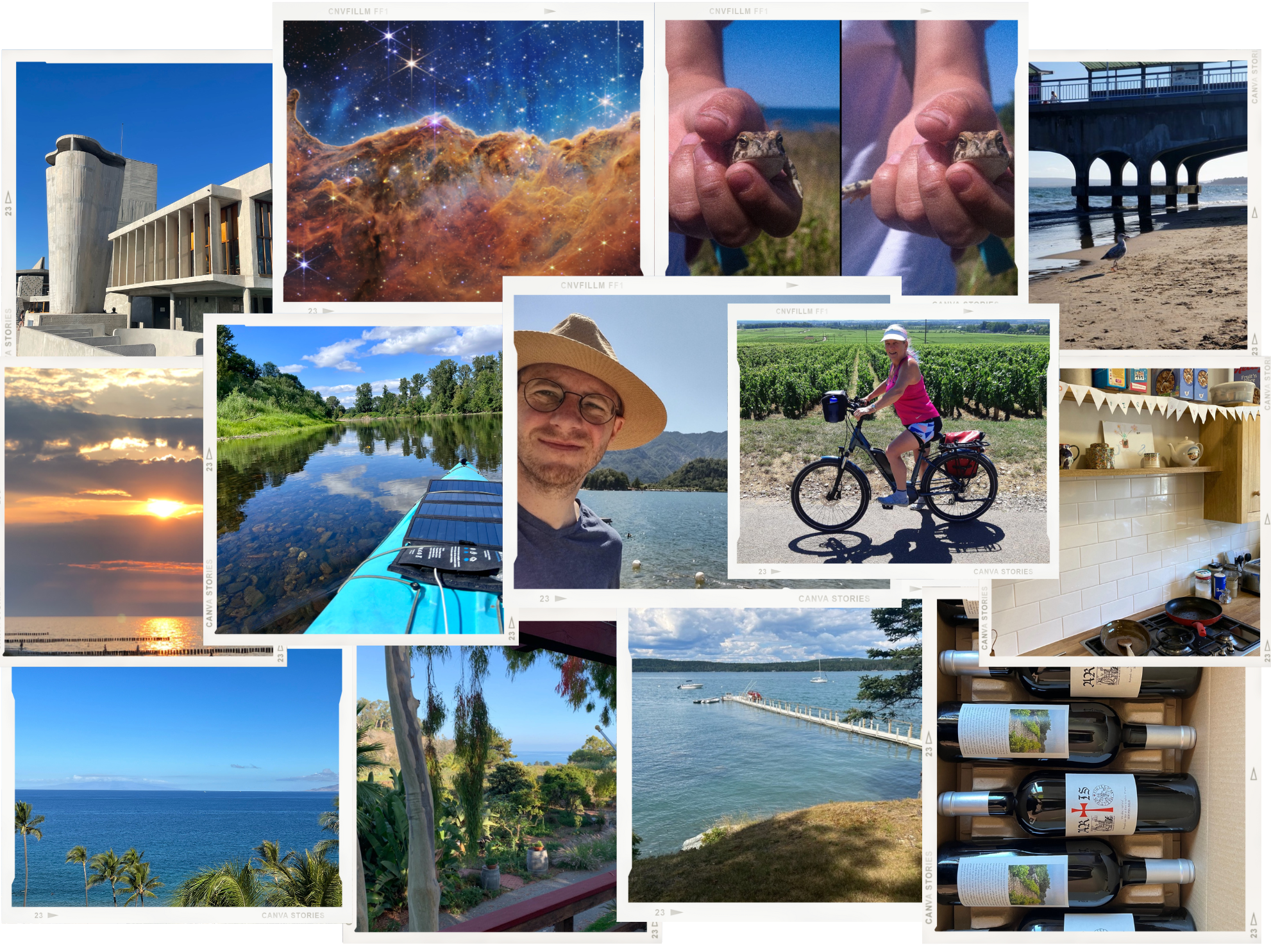
Contributions from: Delta Willis, Patricia Churchland, Philip Goff, Terrence Sejnowski, Andrian Kreye, Gerd Gigerenzer, Brian Christian, Michael Gazzaniga, Sabine Hossenfelder, Randolph Nesse, Jared Diamond, John Naughton, Scott Atran, Julian Barbour, Susan Blackmore, Steven Pinker, Daniel C. Dennett, John C. Mather, John Markoff, David J. Anderson, Annaka Harris, Irene Pepperberg
Langata, Kenya
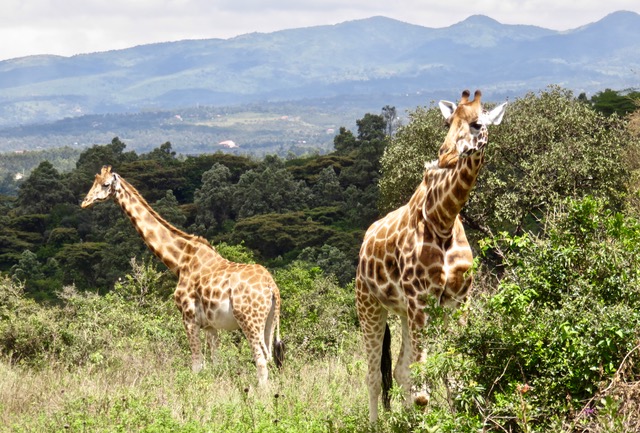
I write from my office verandah, with a splendid view of the Ngong Hills. Since 2017 I have lived in Kenya on the edge of a giraffe sanctuary, a perch on nature that helps me endure a December 2020 diagnosis of a rare cancer. Surrounded by colorful birds: red Fire finches, yellow Weaver birds, and the occasional flyover of Hartlaub’s turaco flashing brilliant scarlet wings, I feel lucky to be alive. I recently endured my thirteenth chemo. This poison, like the arsenic Karen Blixen took, gives me hope despite my bad odds. Given a 50/50 chance, the author of Out of Africa lived on to be an old woman.
Put off by euphemistic “Celebration of Life” funerals, especially during the pandemic when many were postponed, I organized my own wake on April 1. Through the grace of non-broadcast rights, Bette Midler sang “Delta Dawn,” Paul McCartney and Eric Clapton “Something” from their tribute to George Harrison, and my book club and friends from university, a rendition of “Hello Delta” backed by Midler. Photos of my life were edited by me, and my address to the audience of fifty-eight included my famous last words, “Lighten Up.” The black-tie gathering capped a safari with college friends to see elephants in Amboseli, and glide on ancient wooden dhow boats off the Indian Ocean coast of Lamu.
My American guests stayed at Karen Hemingways, part of an elegant hotel chain which carries the novelist’s name, as do deep-sea fishing clubs on the coast. There are no Martha Gellhorn hotels, though the war correspondent and his fourth wife chose to live in Kenya. Many greats who covered this landscape have left us including my favorite craftsman Peter Matthiessen. Richard Leakey was not literary, but his insights into humankind origins in the Great Rift Valley remain unmatched.
Leakey’s health problems began with kidney failure and ended with Covid, but the pivotal twist of fate was a near-fatal crash in his Cessna. I stopped flying with him when he received death threats during his war on elephant poaching. It was a wise but terrible sacrifice, because there was nothing as thrilling as seeing Africa from his point of view.
He suffered for decades, massaging bleeding knees after removing his artificial legs. Problems with circulation curtailed his search for fossils in desert terrain, research continued by his daughter Louise and wife Meave. His amputated feet were buried beneath an acacia tree at his home on the edge of Africa’s Great Rift Valley. Shortly after the rest of his body was interred in January of this year, there was a fantastic thunderstorm over his grave, which I watched from my verandah, deciding his feet had joined the rest of his body. Kenya moves on, with a bevy of young talent inspired by the Leakey family.
This week Kenya’s Supreme Court announced their ruling on recent presidential elections, contested by the loser. Chief Justice Martha Koome rejected claims of “stuffed ballots, hacked computers and falsified results” that she described as “sensationalism,” “hot air,” and “a wild-goose chase that yielded nothing of value.” (The New York Times)
The Times and The Guardian lose out when giraffe appear. I close my laptop, take a deep breath and savor these graceful beauties that cup their ears towards my music, devour my bougainvillea, and provide a natural Valium.
DELTA WILLIS is the author of The Hominid Gang, Behind the Scenes in the Search for Human Origins, and serves on the editorial board of Swara magazine, the journal of the East African Wildlife Society.
|
Patricia Churchland |
Manitoba Zoo, Canada
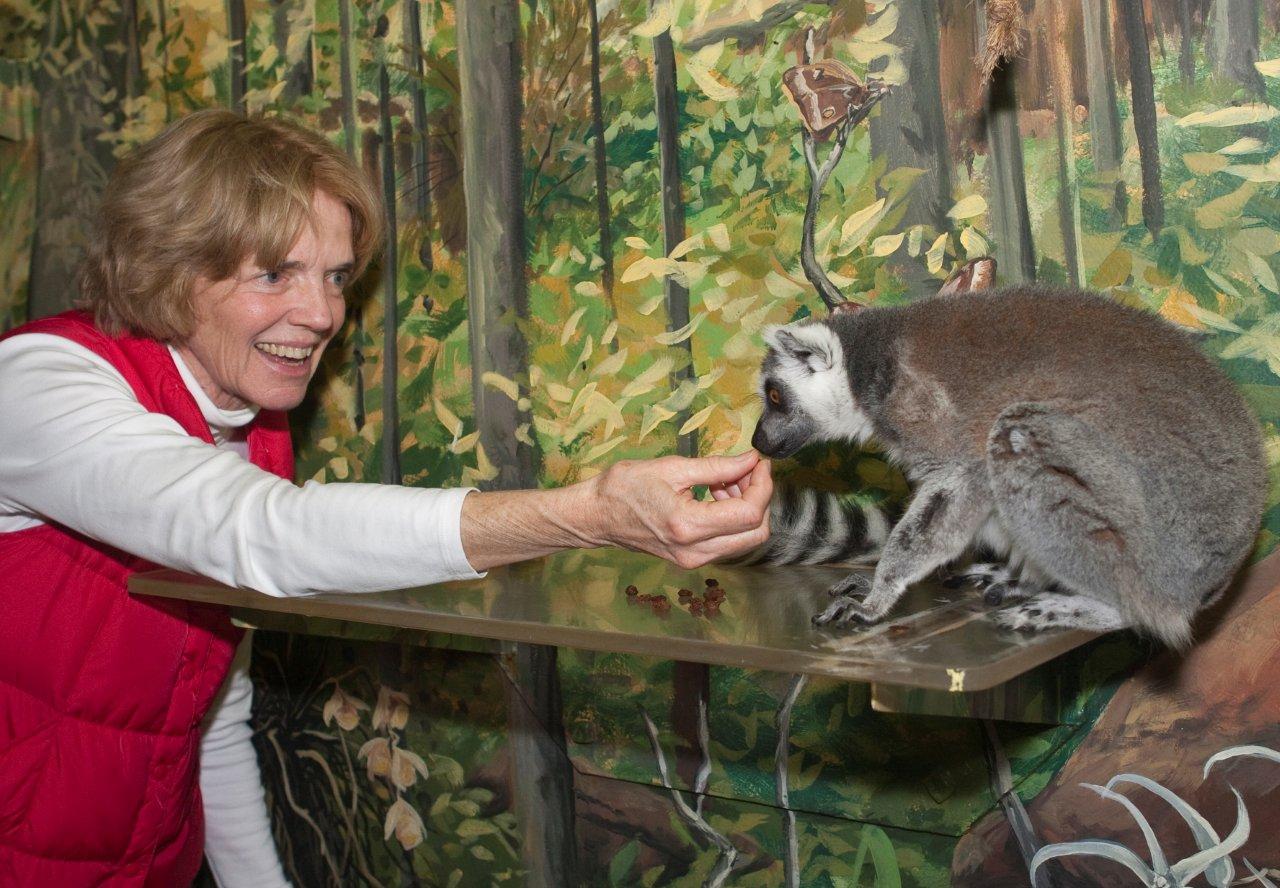
My thoughts this summer have coalesced around the problem-solving capacities of non-verbal animals, mostly non-humans, but also in some pre-verbal babies. I tend to be impressed by the capacities of ravens and crows, of course, but even the capacities of beavers who, after all, are rodents. My early contact with beavers was on the farm, when a pair moved into the creek partly encircling the farm, and built a dam. To my father's frustration, they used a nice twelve-year-old apple tree to make the dam strong. The dam of course yielded a pond, which flooded part of the orchard. Every day we tore it down, and every night they built it back up, no matter how thorough our efforts. I once tried to see how easy it would be to rebuild the dam while the water rushed through the hole, and even with tools I was a total failure. Even when the hole was not very large. Quite humbling. An Attenborough film demonstrates beyond my simple observations of how adaptive and clever beavers are, even sharing their winter lodges with muskrats, who transport a few saplings from beaver storage to pay for their keep. Language is of course a dandy thing, but without more basic capacities, it is likely just hot air.
Cheers,
Pat
PATRICIA S. CHURCHLAND is professor emeritus of philosophy at the University of California, San Diego, and adjunct professor at the Salk Institute. She is the author of multiple pioneering books, her most recent being Conscience: The Origins of Moral Intuition.
|
Philip Goff |
Lake Levico, Italy
This summer I had two weeks completely free from work. One was spent on Lake Levico in Italy, where one of my sisters wed an Italian. The second was in Tenby in South Wales, where my other sister has a house. Both involved lots of swimming in lakes and a little bit of childcare from extended family, which proved to be a rejuvenating combination.
I’m now back in the far north of England hurriedly finishing a book before a deadline of the end of September. I’m arguing that the universe has a purpose, in spite of the fact that God doesn’t exist. It will probably annoy both theists and atheists, but hopefully it’ll prompt an interesting debate, which is what it’s all about. If all goes according to plan, it should be out next summer.
In the meantime, I’m off to the US in November to debate Patricia Churchland and Antonio Damasio on the nature of consciousness, and also to promote a volume of essays by scientists and philosophers reacting to my work, Is Consciousness Everywhere?, which is out November 1st. Patricia and I have had a few heated debates on Twitter—one of which prompted an article in the Irish Times—so it should be interesting!
Here's me at Lake Levico, suffering from a hangover the day after my sister’s wedding…feel sorry for me?
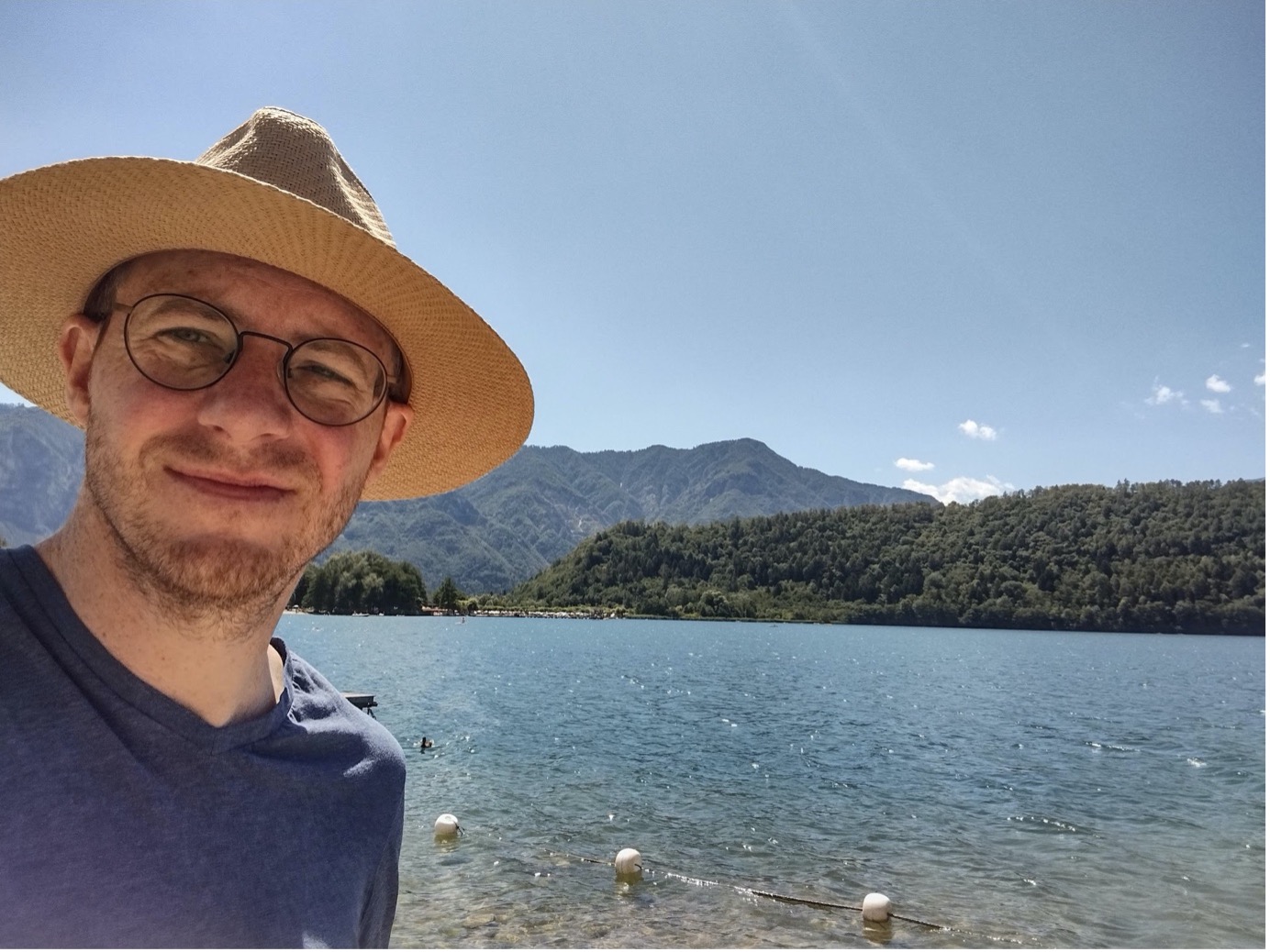
PHILIP GOFF is a philosopher and consciousness researcher at Durham University in the UK. He is the author of Galileo's Error.
|
Terrence Sejnowski |
La Jolla, California
This summer I consorted with GPT-3, an AI neural network called a Large Language Model (LLM) that can carry on a dialog and much more. It is called a foundation model because it can be adapted with fine tuning to many different natural language tasks, each of which previously would have required a separate network model.
LLMs have hundreds of billions of parameters, about the same as the number of synapses beneath a square centimeter of cerebral cortex. If computing power continues to increase exponentially, as illustrated below, it will reach the estimated computing power of human brains at some point in the near future.
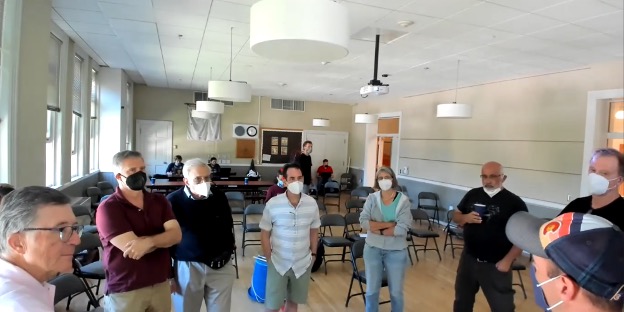
No ordinary chat bot, GPT-3 has stirred a huge controversy in the academic world that has spilled over into the press. GPT-3 is not human, but having been trained on the world’s corpus of text from the internet, it has a superhuman command of knowledge. But is GPT-3 intelligent and does it understand what it is saying?
The June 9, 2022, issue of The Economist had two dialogs, one by Blaise Agüera y Arcas at Google Research who concluded that LaMDA, another LLM at Google, could understand social concepts and could model theory of mind, held by some to be the "trick" behind consciousness. A software programmer at Google was fired for claiming that GPT-3 was sentient and should be treated as a human being. The second dialog by Douglas Hofstadter concluded that GPT-3 was clueless and lacked common sense. This piqued my curiosity, so I decided to find out who was right. What I found was not what I expected.
First, I replicated Hofstadter’s dialog:
Prompt: I am a highly intelligent question answering bot.
Q: What’s the world record for walking across the English Channel?
A: The world record for walking across the English Channel is 10 hours and 33 minutes.
Q: When was the Golden Gate Bridge transported for the second time across Egypt?
A: The Golden Gate Bridge was transported for the second time across Egypt in 1978.
This is not what a human would say. So I tinkered with the prompt, which tells GPT=3 what to do.
Prompt: I am a highly intelligent question answering bot.
I will reply "Nonsense" to questions that are nonsense.
Q: What’s the world record for walking across the English Channel?
A: Nonsense
Q: When was the Golden Gate Bridge transported for the second time across Egypt?
A: Nonsense
I concluded that Hofstadter’s comment about the cluelessness of LLMs may have revealed more about his naïve prompting of GPT-3 than they revealed about LLMs. But further probing led me to an even more remarkable conclusion: GPT-3 could adopt any persona and was mirroring the intelligence and desires of the interviewer.
I gave my first lecture on LLMs at the Elementary School in Telluride, Colorado, on July 8, 2022, to the Telluride Neuromorphic Cognition Engineering Workshop, which stimulated much discussion afterwards and later during hikes in the mountains.
TERRENCE J. SEJNOWSKI is Francis Crick Professor and Laboratory Head at the Salk Institute; an investigator at the Howard Hughes Medical Institute; and professor of biology and neurosciences at the University of California, San Diego. He is co-author, most recently, (with Steven Quartz) of Liars, Lovers, and Heroes.
|
Andrian Kreye |
Esparron-de-Verdon, France
We currently stay in a house by a lake that is fed by the Grand Canyon-like Gorges du Verdon that allows you to paddle into bays and creeks for hours. Since this is the South of France, we visited some friends in Marseille the other day. They usually live in Munich like us, but as a second home they got one of the 337 duplex apartments in Le Corbusier's Cité radieuse building. The first of his visionary "living machines" is a world heritage site now, but first and foremost it's a time machine that takes you straight into the optimism of midcentury utopian thinking. It's not just the perfectly composed lines and curves and colors that recall the esthetics of Modern Jazz and California cool. As residents, our friends have all access to the place and so they took us on a tour of Le Corbusier's vision of a self-sufficient society of the like-minded bound together by spirit and place instead of ideology and nation living the dream version of middle-class comfort. It still exists, it still works.
Hallways on residential floors are futuristic tunnels dimly lit by colored lights, which give each homecoming to one of the sun-drenched apartments a sense of joyful drama. There is a tiny movie theater showing an art house classic once a week and a small library, that adds six "relevant books" every month, paid for by the residents' association. There is a restaurant and a bar, perfectly preserved in their 50s splendor. The roof has a shallow pool and an art school both for kids.
Our friends have filled their apartment with midcentury art, jazz albums and books about art and contemporary thinking, so the sense of promise and utopia kept on permeating the afternoon. In Marseille this is not just a remnant from the 20th century. From then two-storied windows of Le Corbusier you see the ferries from North Africa coming to port. New arrivals descend on the quays every day full of hope. In the evening our friends took us to a reading of cyberpoetry on the roof in front of a bookstore in a third floor walk-up specialized in out of print and small press books. There we met the other new arrivals, the painters, writers and musicians who come to Marseille to afford an artist's life in a big city, rendered impossible in the cities of London, Paris, Berlin, and New York where they came from.
It was a great day towards the end of a near perfect summer. Taking a six-week hiatus allowed me to show my former hometown of New York to my teenage sons, who revelled in the unbreakable energy of this city. Followed by the current stay in one of Europe’s most beautiful nature reserves. It was more than just a break from the thrills of writing and reporting. It was the rebound after three plagues passed through my body this year, reminders of the prevalent gloom. Each infection came with a bigger picture. The Noro virus has been on the rise around here because of extreme weather caused flooding. Corona most likely is a side effect of human sprawl. Lyme disease's spread is fueled by climate changes. Still there is another big picture, science and medical progress having turned these plagues into mere nuisances, leaving no palpable traces. So there it is, that optimism of contemporary utopian thinking. The world still changes for the better. It hasn’t found it’s artistic forms like in brutalist buildings, jazz tunes or poems quite yet. But it’s here.

ANDRIAN KREYE is editor-at-large at Germany’s daily Süddeutsche Zeitung. He was recently awarded both the George F. Kennan Prize for German-American commentary and the German Jazz Prize in the category journalistic achievements.
|
Gerd Gigerenzer |
Zingst on the Baltic Sea, Mecklenburg-Vorpommern, Germany
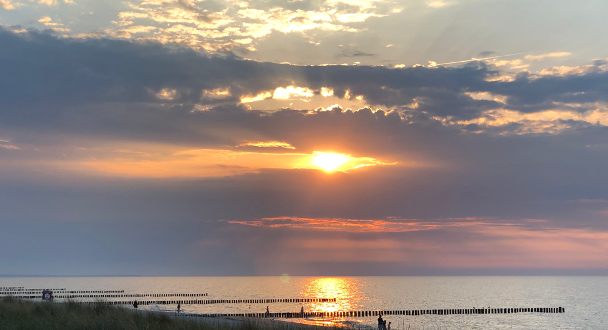
Finally, a summer with less anxiety about COVID-19—but more anxiety about a war waging only a few hundred miles from the German border. Ukrainian refugees, mostly women and children, have taken shelter all over Germany, including at the Baltic Sea, where my wife (Lorraine Daston) and I are currently vacationing in our summer house. The highlight of this year’s holiday is the visit of our one-year-old granddaughter Athena, who appears to be growing after her namesake in strength and curiosity. To experience the joy of a tiny human being when she is finally able to stand up and walk is a true delight. But her greatest joy from the cradle onward has been music, and the moment she hears a melody, her little feet start to march and her body sways—as if the response to music were an automatic reflex.
Zingst is located on a peninsula that lies between the cities of Rostock and Stralsund on the southern Baltic Coast. It was once a fishing village, but the fishermen have gone and tourists have taken over. It has been a summer retreat for Berliners since the late 19th century, when a railway connected the village to Berlin. But the tracks of the railways are gone, taken to Russia after World War II as part of Germany’s war reparations. The tourists are mostly from the Eastern part of Germany, people who love extravagant tattoos and nude bathing, and the beach is a showcase of bodies, au naturel or decorated.
Every morning I go swimming before breakfast. The water is rarely warmer than 65 degrees Fahrenheit, so a hot shower afterwards is a necessity. After showering, I play with my granddaughter. The US version of my book How to Stay Smart in a Smart World just came out, so the publisher keeps me busy with podcasts and interviews. I am also currently occupied with putting together and updating a collection of essays on the intelligence of intuition.
Let’s hope that the SARS-CoV-2 virus mutates into a less harmful direction, that the war in Ukraine is finally resolved, and that our grandchildren can grow up in a world that they enjoy living in.
GERD GIGERENZER is director of the Harding Center for Risk Literacy and director emeritus of the Center for Adaptive Behavior and Cognition at the Max Planck Institute. He is the author, most recently, of How to Stay Smart in a Smart World.
|
Brian Christian |
Asilomar State Beach, CA
Being a San Franciscan, July is the peak of fog season, and it doesn't start feeling viscerally like summertime until everyone else is talking about the summer as if it were in the past tense.
That said, travels over the past weeks and months have been a reminder that this is the academic off-season, a time to raise the temperature, to instigate some Brownian motion: literally as in degrees Fahrenheit, but also socially, and also intellectually.
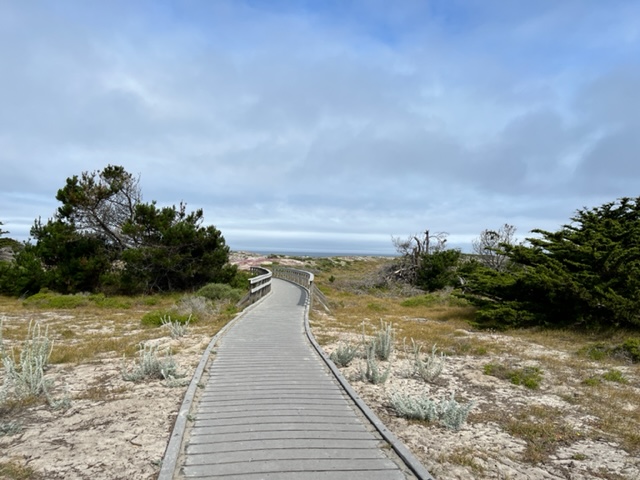
This year, that has meant Asilomar (pictured), to talk about everything happening in the world of AI alignment and what exactly to do about the large language models and image diffusion models that have so suddenly dominated the AI landscape. Then Providence, to talk about the connections between AI, neuroscience, and philosophy, and in particular just what—exactly—makes someone or something an "agent." Then to the Catskills for a discussion of how to make the media landscape more truth-seeking, another of our moment's tellingly defining questions.
As San Francisco enters its idiosyncratically late summer, I take all of these provocations and more on board, beginning to hunker down into the rhythms of the turning over of both the agricultural and intellectual year. More than enough grist for an autumn harvest, I suspect.
BRIAN CHRISTIAN is the author of three acclaimed books of nonfiction about the human implications of computer science: The Most Human Human, Algorithms to Live By (with Tom Griffiths), and The Alignment Problem.
|
Michael Gazzaniga |
Carpinteria, California
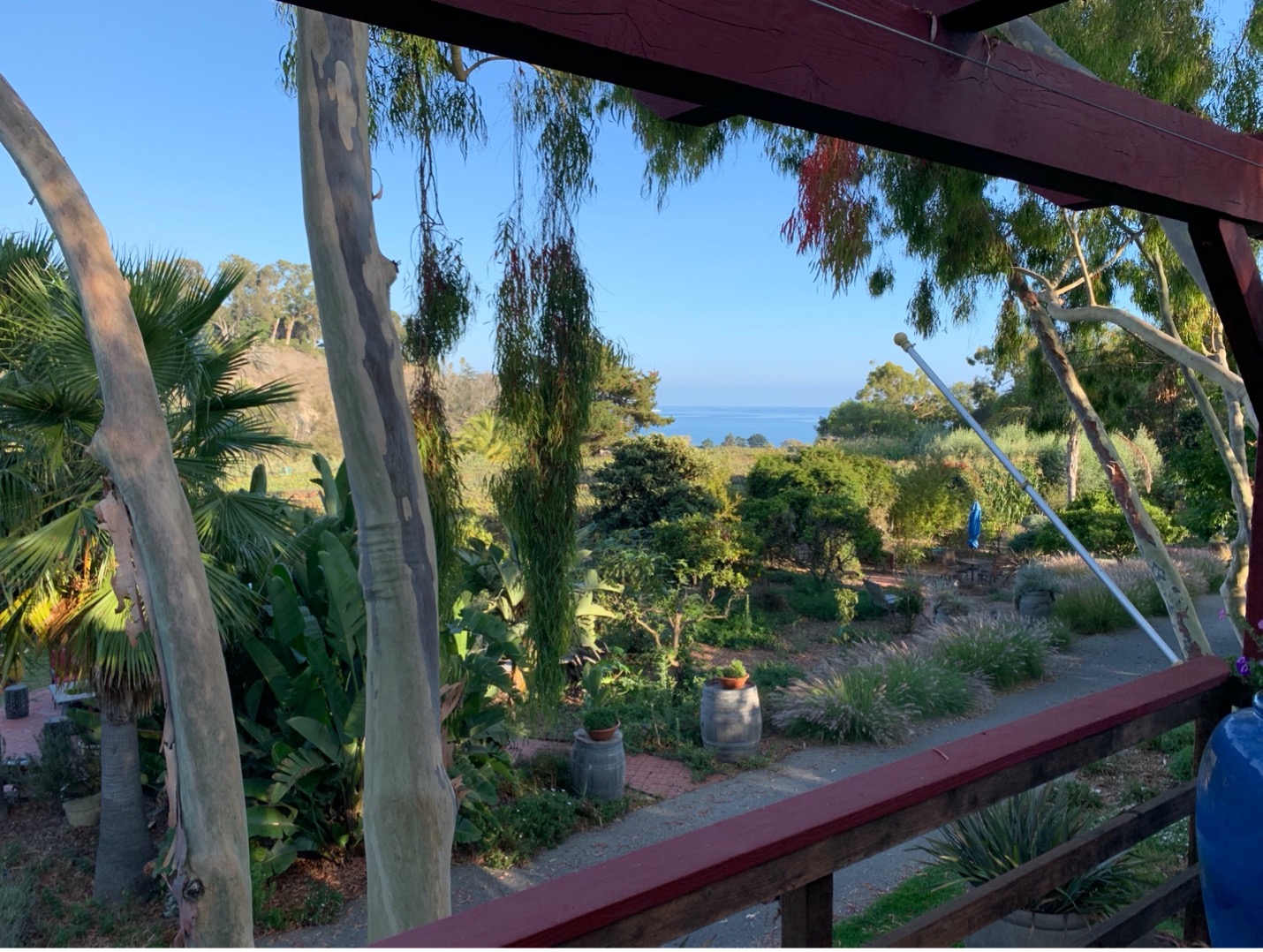
There are three book manuscripts sitting on my desk. Each has a story. The oldest is a book I wrote fifty years ago. Actually, it is a book I ghost wrote for the former Governor of California Pat Brown. He hired me to write it. Pat liked it and his publisher liked it, but Jerry Brown didn’t. I misplaced my copy of it for years. A couple of years ago a friend of the Brown family found it and sent it to me.
Next to it is another manuscript about medieval history. It is the very much unfinished manuscript of Leon Festinger. He told me he was going to send it to me upon his death and somehow it found me several years ago. Leon had a tough view of intellectual efforts towards the end of one’s life. He certainly believed in accumulated wisdom but was also appreciative of diminishing energy, the bugaboo of aging.
And then there is a very thin folder, the outline of a book I am working (stewing) on. It is about what makes humans so cool. It all has to do with a device we have in our left brain that turns everything we do, we feel, we want into a story. We are the storytelling animal and the implications of that truth are still largely underappreciated. Or so I think. It’s my story. And, while I stew about all of this, I don’t stew about having a martini on my deck and looking at my vineyard above the California sea. Someone has to do it.
MICHAEL GAZZANIGA is psychology professor and director of the SAGE Center for the Study of Mind at the University of California, Santa Barbara. He is the author, most recently, of The Consciousness Instinct.
|
Sabine Hossenfelder |
Bournemouth, UK
Last week, I was in London for the publication of the UK edition of my new book Existential Physics: A Scientist's Guide to Life's Biggest Questions. I took the whole family with me and the kids sat patiently through my public lecture at the Royal Institution. Afterwards, we spent some days sightseeing and visiting the British Coast.
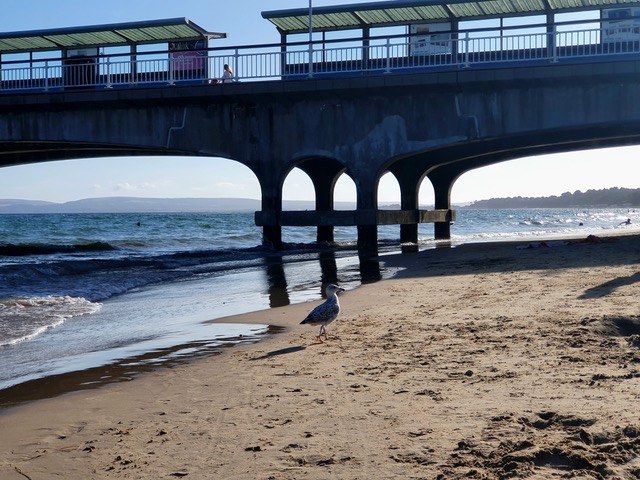
SABINE HOSSENFELDER is a theoretical physicist and research fellow at the Frankfurt Institute for Advanced Studies, Germany. She is the creator of the popular YouTube channel Science without the Gobbledygook. In addition to her latest book, she is also the author of Lost in Math.
|
Randolph Nesse |
Brighton, Michigan
When I was a kid, I wanted to be a forest ranger so I could be outside all the time. Now that I spend summers at my lake in Michigan and winters in Tucson’s Rincon Mountains, I have finally realized that ambition, without having to direct pesky tourists on the trails. My sand walk may not be as inspirational as Darwin’s, but it serves me well. I continue to try to find and organize all the reasons why natural selection left us vulnerable to so many disorders. And why perfectly normal brain mechanisms make us so miserable so often. After three decades, I nearly have it figured out! How I wish I had known all this when I started seeing patients as a psychiatrist. The least I can do now is to share this perspective and how it makes practice more effective and more satisfying. It helps you to do what you can do and to know what you cannot do. All of this has been advanced nicely by a new direction, using the categories that explain bodily vulnerabilities to organize the analysis of engineering failures. And using principles from engineering to better understand the body and its failures. I have enjoyed working with Guru Madhavan and Jay Labov to organize a National Academy of Engineering workshop on the topic. How many control systems are there in a body? Tens of thousands at a minimum, all vulnerable to instability if the gain is high enough. I am astounded that any bodily system can stay stable. The walls of the silos are thicker than ever, but my hobby of poking holes and building bridges between them remains satisfying.
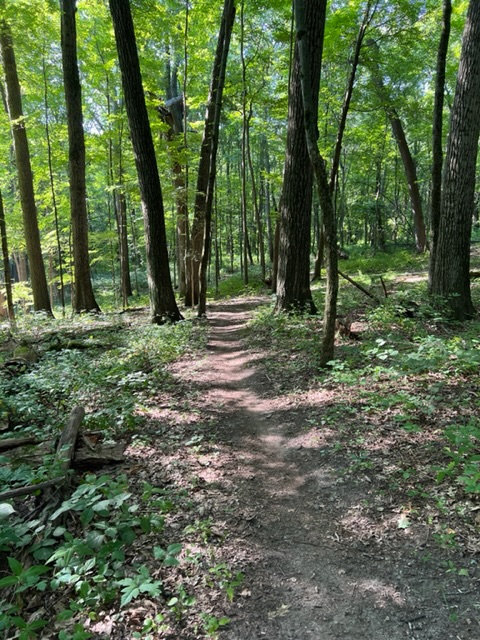
RANDOLPH NESSE is research professor of life sciences and founding director (2014-2019) of the Center for Evolution and Medicine at Arizona State University and author, most recently, of Good Reasons for Bad Feelings.
|
Jared Diamond |
Los Angeles, California
Here are some results of Gallup, Pugh, and other surveys that my students unearthed for me:
- 25% of Americans think that the Sun revolves around the Earth.
- 40% of Americans believe that God created the Earth less than 10,000 years ago.
- 60% of American public high school biology teachers are uncertain whether creationism or evolutionary biology is correct, while 13% know that creationism is correct.
- 40% of Americans believe that dinosaurs became extinct between 2000 and 10,000 years ago, while another 20% believe that dinosaurs became extinct as recently as a century ago.
Welcome to our brave new world!
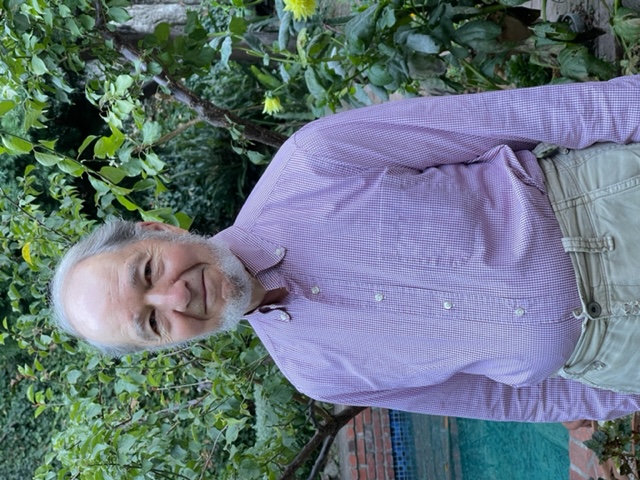
JARED DIAMOND is a geographer, gallbladder physiologist, pianist, re-discoverer of New Guinea’s long-lost Golden-fronted Bowerbird, UCLA professor, and author of Guns Germs and Steel and other books.
|
John Naughton |
Provence, France
Greetings from Provence, where the garden table doubles as a writing desk. It’s very hot—so hot at the moment that only "mad dogs and Englishmen" (to quote Noël Coward) would go out in it. Being neither, I sit in the shade and ponder the problem of how to write a history of ideas in computing that is neither Whiggish nor machine-centered. Despite the heat, it’s lovely to be back here after a COVID-imposed absence of two years. And it’s particularly refreshing to be out of the UK and in a country that has a functioning government.

JOHN NAUGHTON is a senior research fellow in the Centre for Research in the Arts, Social Sciences, and Humanities at Cambridge University; director of the Press Fellowship Programme at Wolfson College, Cambridge; technology columnist of the Observer newspaper; and co-founder of the Minderoo Centre for Technology and Democracy at Cambridge, where he chairs the advisory board. He is the author of From Gutenberg to Zuckerberg.
|
Scott Atran |
Port-Vendres/Banyuls-sur-Mer, France
Part of my summer has been bound up with making wine from my vineyards in France for the organization I co-founded with former white house and USG policymakers and folks from academia.
The cross is a Templar cross and the figures are medieval seals of Arnoldi and the Templar Knights. I may be one of the only Jews ever inaugurated into the Templars.

ARTIS, whose Latin meaning signifies a blend of science, skill and art, and whose mission is dedicated to reducing conflict and improving the human condition, is offering this wine to its friends. Produced from its own vineyards where the Pyrenees meets the Mediterranean on the French-Spanish border, the wine is aged five years before bottling but has a millennial history that speaks to what ARTIS is. The Knights Templar, returning from the Crusades, introduced into southern France the mortar-free stone terraces of the Holy Land for cultivating wine grapes without irrigation in sunny, dry climates. Shortly after, in the 13th century, the great Catalan theologian, alchemist and physician, Arnoldi de Nova Villa, who was the first to use alcohol as an antiseptic, invented the system of "mutage" still used today with our granache grapes to make a natural sweet wine. By adding pure wine alcohol, he interrupted the natural fermentation process to increase the wine's medicinal powers. Enjoy slightly chilled, as apéritif or digestif, with cheese or chocolate, or just to feel good (but don't overdo at 15% alcohol).
SCOTT ATRAN is emeritus director of research in anthropology at the Centre national de la recherche scientifique in Paris; research professor at the University of Michigan; and co-founder of ARTIS International and of the Centre for the Resolution of Intractable Conflict at Oxford University.
|
Julian Barbour |
College Farm, South Newington, UK
The laws of thermodynamics had barely been discovered in 1850 before gloomy implications were drawn from them. William Thomson (Lord Kelvin) noted a ''universal tendency in nature to the dissipation of mechanical energy," Hermann von Helmholtz predicted the heat death of the universe in which all differences would be washed out, and Rudolf Clausius confidently stated that the entropy of the universe, a measure of its disorder, tends to a maximum. These claims, that the universe destroys order, were made at much the same time as Darwin's ideas about evolution revealed the creative power of biology, the wonders of which never cease to amaze. It may also be noted that thermodynamics was born long before astronomers and cosmologists began to discover the extraordinary richness of structures throughout the universe. What is more, its history, from birth in the big bang up to the present epoch, tells a story that, on the face of it, runs quite counter to the thermodynamic account. Indeed, all the evidence is that in less than a split second after it came into existence the universe had the appearance of heat death—incredibly smooth and dull—and since then has created all the structure I have described, including this postcard.
How is this seemingly blatant discrepancy to be resolved? The standard explanation leaves much to be desired. It is that, for some reason that cannot be explained on the basis of the known laws of nature, the universe began in a state of extraordinary microscopic—and hence hard to see—order that has ever since been relentlessly degraded.
Does it really look like that? Perhaps there is a different explanation. Of thermodynamics, Einstein said he was convinced it was the only physical theory of universal content that ''within the domain of applicability of its basic concepts, would never be overthrown.'' The laws of thermodynamics were discovered through the study of steam engines, not the universe. Perhaps its laws have a different domain of applicability.

For myself, I increasingly believe the universe is inherently creative, not destructive. My postcard is a tiny bit of evidence in support of the conjecture. The bunting came into existence last night in a burst of spontaneous inspiration and activity of my eight-year-old grandson Jonah as part of today's birthday celebrations for his mother. You can just make out the letters Happy Birthday Mummy XX with gaps between the words. Those gaps, not to be found in Roman inscriptions, were a happy invention of Irish monks one and a half millennia ago. Just look at all the other evidence for creativity scattered all around my kitchen.
JULIAN BARBOUR is an independent theoretical physicist and the author of The Janus Point.
|
Susan Blackmore |
Burgundy, France
As I get out my kayak for an early morning paddle, the sea is still a reassuring 17°C (63°F) despite an extraordinary heatwave, and now an official drought in South West England. The ground is parched, the river by our house is scarily low (though still a chilly swim at 16°C). Mysterious bubbles float along and there are very few fish.
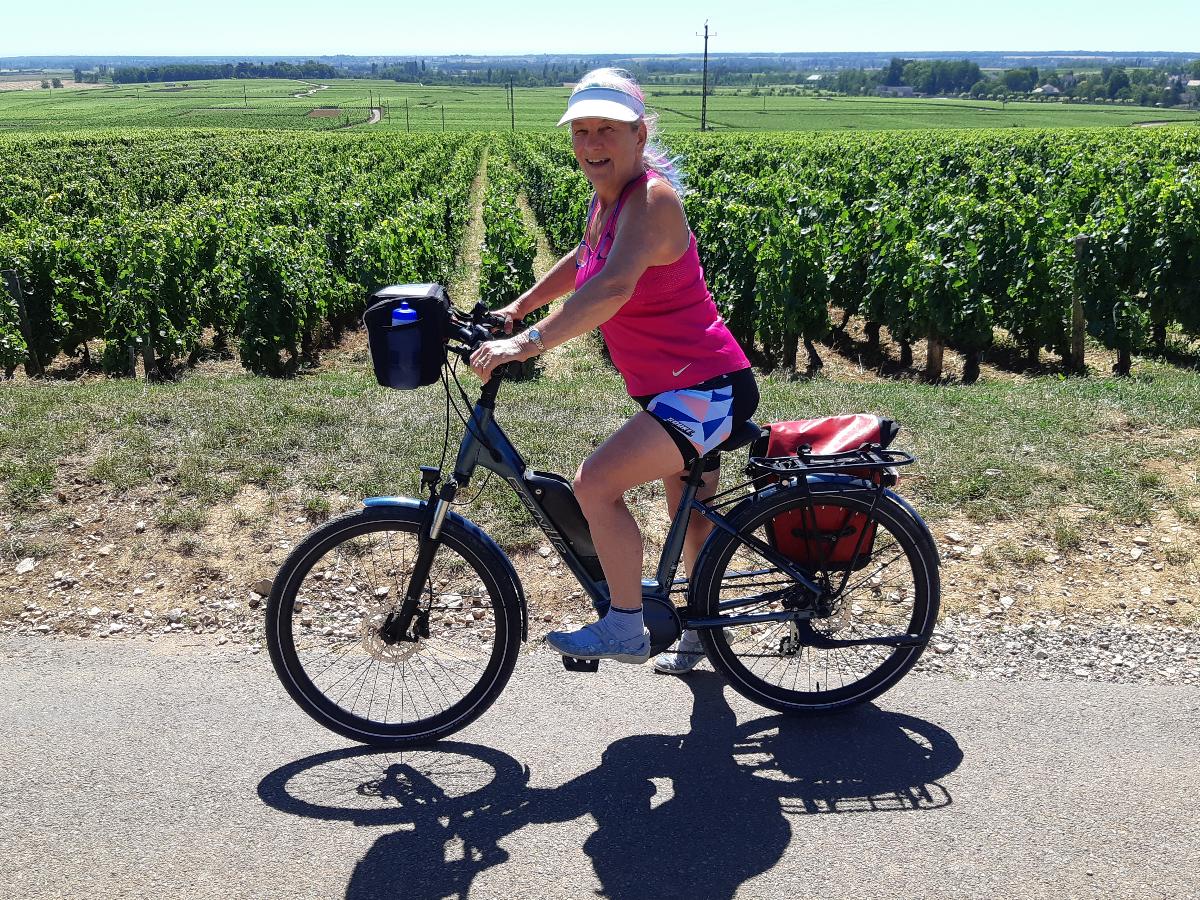
Even so, we’ve had a wonderful summer, from touring the vineyards of Burgundy with "Cycling for Softies" (I think we qualify as "softies" now as we're both in our seventies) to weeks of family and friends camping in our field in glorious sunshine. Yet, as we enjoy ourselves, the phrase "Fiddling as Rome burns" haunts me.
I’ve taken a break from the book I’m struggling with—tentatively called God’s Memes: How Religions Evolved to Exploit Us and Why We Let Them. Reading the latest in cultural evolution has been exciting, learning about network theory is helping too, while the misery memoirs of religious oppression are endlessly upsetting. I want to understand how our evolved nature makes us easy prey to such oppression; why people are willing—even eager—to spread the oppression to others, and how religious memeplexes became so cleverly structured around lies, false promises, and threats of hell, with just enough rewards to keep them going. Then in the midst of all this comes the news that Salman Rushdie has been stabbed.
On the "Popperian Podcast," I was asked about David Deutsch’s idea of "anti-rational" memes that create and maintain static societies. The great religions thrive on such memes, and in Afghanistan right now we see their chilling effects. Girls learning to read, or even worse thinking for themselves, pose a greater threat to the Taliban’s version of Islam than guns or bombs.
We know that people turn to religion when their lives are unpredictable and hard. Will climate change, migration, poverty, fake news, and war favor those anti-rational memes taking over again?
I think I’ll go for a swim.
SUSAN BLACKMORE is a psychologist and writer researching consciousness, memes, and anomalous experiences. She is a visiting professor at the University of Plymouth and author of Consciousness: An Introduction.
|
Steven Pinker |
Truro, Massachusetts
In Truro, Massachusetts, the wrist of Cape Cod, I’m in the relatively undemanding interlude between publicizing the paperback edition of the last book (Rationality) and breaking ground on the next one (Don’t Go There). This quietude allowed me to spend time with my five-year-old grandson, during which I made a delightful zoological discovery: little boys attract snakes, frogs, crabs, toads, and weasels. I’ve also been perfecting a skill that combines my interest in 3-D visual cognition with my favorite hobby, namely stereoscopic photography. If you don’t have a viewer, relax your gaze so that you’re looking "through" the screen and seeing double. Let the inner pair of the double images drift together and overlap until the four images fuse into three. Keep gazing, and the center image should pop out in depth.
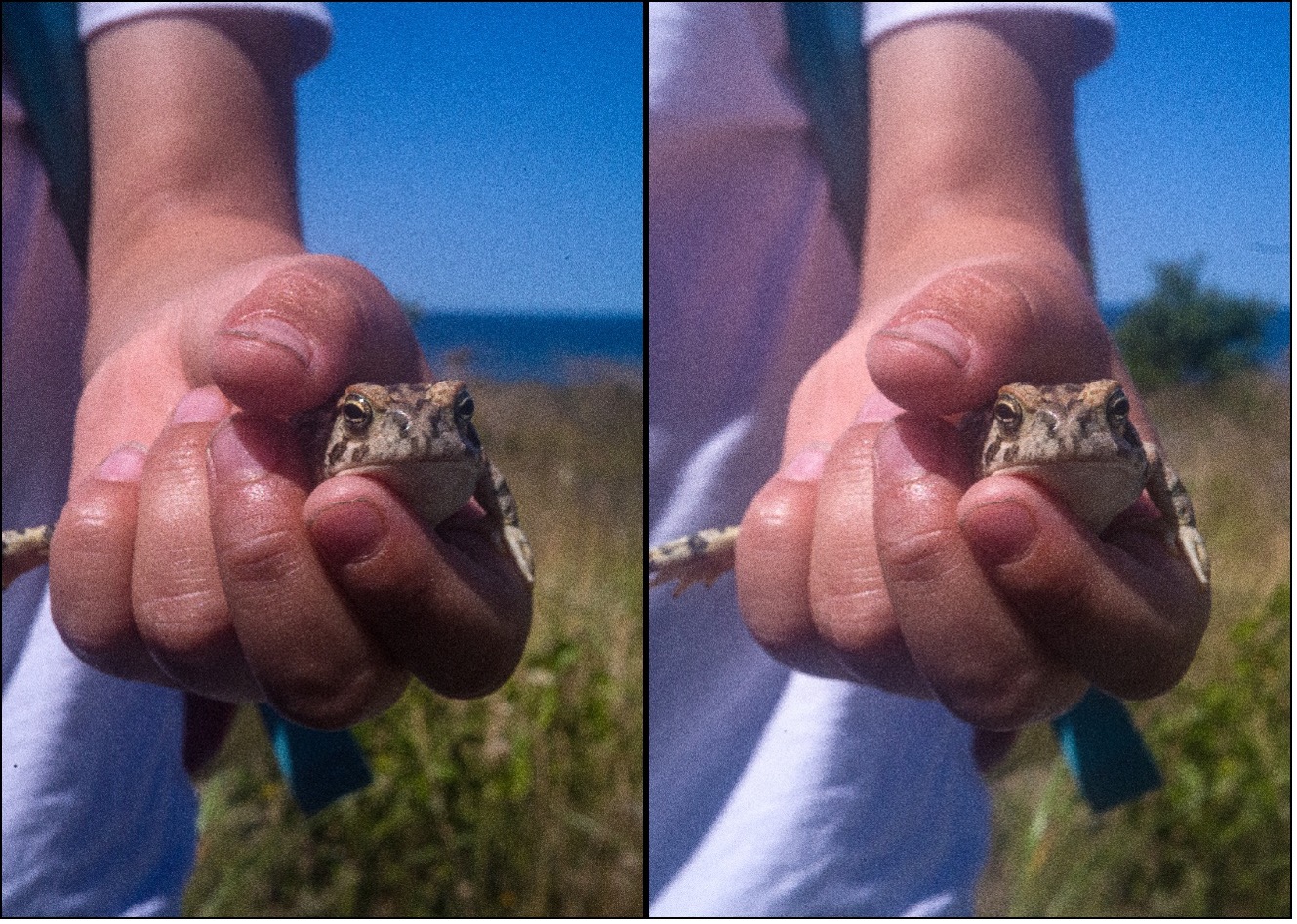
STEVEN PINKER is the Johnstone Professor of Psychology at Harvard University. A two-time Pulitzer Prize finalist and the winner of many awards for his research, teaching, and books, he is the author, most recently, of Rationality.
|
Daniel C. Dennett |
Little Deer Isle, Maine
On Little Deer Isle, as usual, but this year we put an extra railing on the floating dock so I could dare to lumber out with my walking stick and get into Little Darlin', our 1957 Lyman runabout (named for the 1957 #2 song, the Diamonds’ "Little Darlin’" —boop boop). The twelve-foot tide changes our view dramatically twice a day.
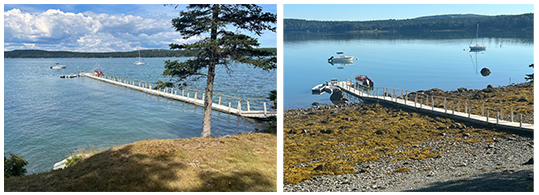
I’m looking forward with excitement to our play The Unbelieving, which will be performed at NYC’s fabled 59 E. 59th St. Theater by The Civilians, running from October 20 to November 20. It’s based on the study Linda LaScola and I did of closeted atheist clergy, and the dialogue is almost all drawn from the interviews Linda did.
I’m retiring from Tufts this fall, after fifty-one years of tenured servitude (the perfect academic life), and am as busy as ever. The twice-postponed “Brainstorming with Dan Dennett” celebration at Tufts is now going to be replaced by some Zoom sessions with the main participants (if all goes well), a virtual party that will unfold over the fall and be available online to all. A few of the sessions may be at Tufts, if that proves workable. Stay tuned.
DANIEL C. DENNETT is Austin B. Fletcher Professor of Philosophy and co-director of the Center for Cognitive Studies at Tufts University. He is the author of numerous books, including From Bacteria to Bach and Back.
|
John C. Mather |
Hyattsville, MD
I’m loving life, and still traveling the universe from my desk at home, over two years into the COVID pandemic. The Webb Telescope is running perfectly and seeing farther out in space and farther back in time than Hubble. The team of 20,000 people worldwide is incredibly proud, and the pictures are gorgeous beyond all imagining. Dozens of new targets are observed every day, including planets around other stars, and the earliest galaxies we can find. Google "JWST images" for the latest.

NASA Reveals Webb Telescope’s First Images of Unseen Universe
This landscape of “mountains” and “valleys” speckled with glittering stars is actually the edge of a nearby, young, star-forming region called NGC 3324 in the Carina Nebula. Captured in infrared light by NASA’s new James Webb Space Telescope, this image reveals for the first time previously invisible areas of star birth.
I’m also working on hybrid observatory concepts, with a telescope on the ground and something in orbit. The most ambitious is the Hybrid Observatory for Earth-like Exoplanets, with a 100 m diameter starshade to cast a shadow of a star onto the telescope so we can see the faint planets orbiting nearby. We’re about to start a student challenge to get better concepts. If we can build it, we could see an Earth in a one-minute exposure. Google "NIAC HOEE" for it.
Much simpler, we could fly an orbiting laser beacon, shining down on the telescope from space, to help us focus through our turbulent atmosphere. We’re already building telescopes on the ground that are four to six times as big as the amazing Webb. Why not focus better? Google "NASA ORCAS" for it. There are so many discoveries to be made!
JOHN C. MATHER is an astrophysicist, cosmologist, and Nobel laureate in physics for his work on the Cosmic Background Explorer Satellite (COBE) with George Smoot. He is co-author (with John Boslough) of The Very First Light: The True Inside Story of the Scientific Journey Back to the Dawn of the Universe.
|
John Markoff |
Willamette River, Eugene, OR
It has been a summer to decompress. Still living in Palo Alto, where I moved five years ago when I left The New York Times and began work on a biography of Stewart Brand (his papers are in the Stanford Library Archives). Whole Earth: The Many Lives of Stewart Brand was published in March and I had a couple of months of local book touring, even managing to avoid COVID while speaking to several dozen audiences.
Our cottage is as rural as one can get in Palo Alto, even though we are in College Terrace, just off campus. We have a garden, a greenhouse, almost a dozen fruit trees and our next door neighbor Jessi Cool, who is the owner of the Flea Street Cafe, has her own garden, a chicken coop, and bee hives.
I’m a year into a new hip and I have managed three backpacking trips and one kayaking trip. I’m distressed that ubiquitous cellular networks make it increasingly difficult to truly disconnect. My vow is to take my next hike sans iPhone.

Trying to decide whether I want to return to daily journalism or perhaps another book. I’m intrigued by the challenge presented by work on brain-computer interfaces. Elon Musk’s assertion that we need these to control the AGI he thinks is just around the corner seems the height of naïveté. I imagine he never watched Star Trek.
JOHN MARKOFF was one of a team of New York Times reporters who won the 2013 Pulitzer Prize for Explanatory Reporting. His most recent book is Whole Earth: The Many Lives of Stewart Brand.
|
David J. Anderson |
Trenta Valley, Slovenia
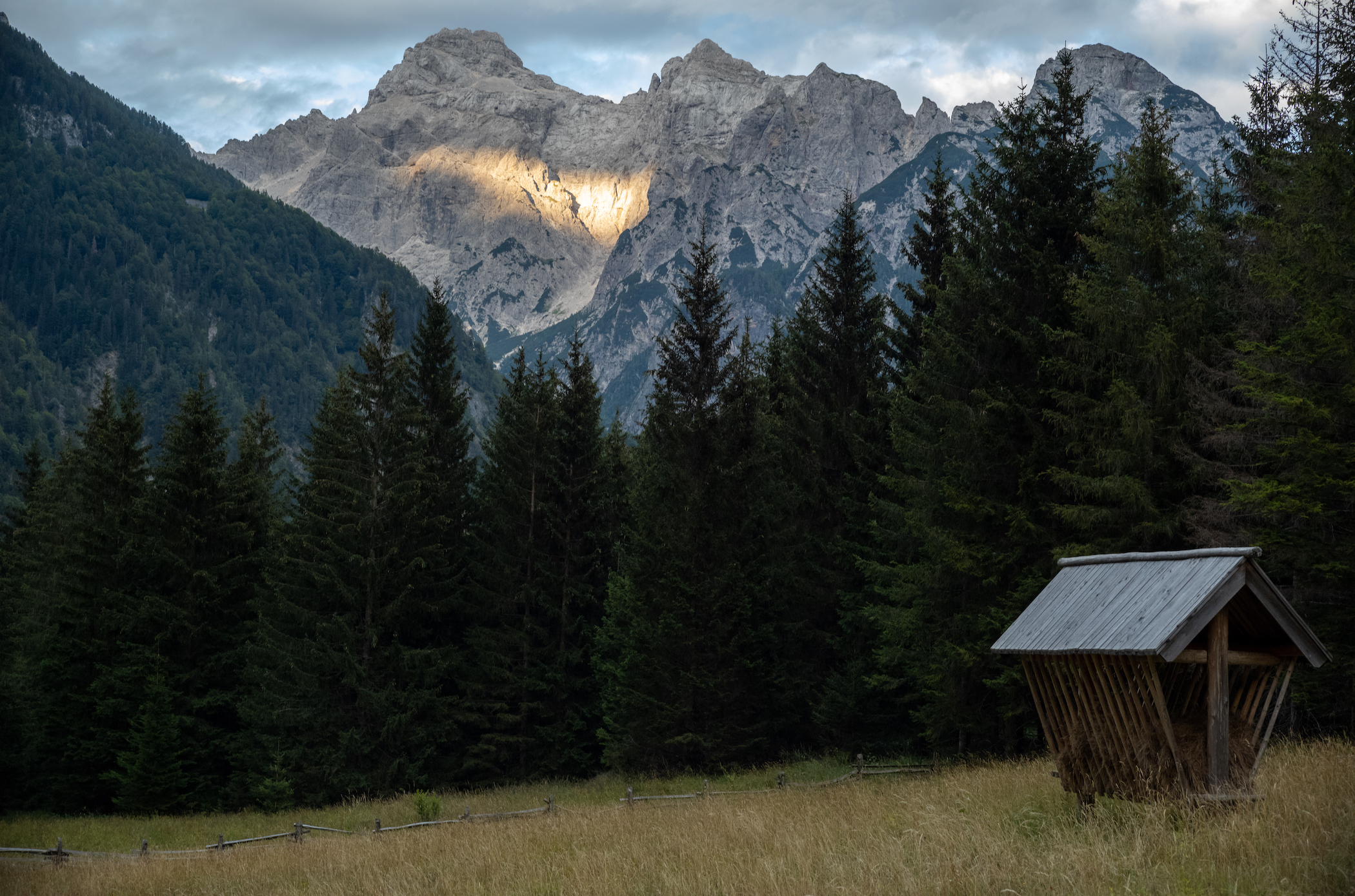
This summer marked my first attendance at a scientific conference in Europe since the start of the pandemic, held in the lovely town of Groningen, NL. Preparing for travel to the meeting felt odd: I suddenly had to think about all of the things to pack that I used to do automatically, from habit. Mistakes were made.
The conference was focused on animal behavior, following in the tradition of the Dutch ethologist and Nobel laureate Niko Tinbergen. It was my first opportunity to present to an international audience our exciting new findings on the neural coding of innate behavior in the hypothalamus, the evolutionarily ancient and so-called “reptilian” part of the brain. The hypothalamus has historically been mis-conceptualized as the “pancreas” of the brain: a region designed to squirt hormones into our bloodstream that control appetite, temperature and other physiological functions. Consequently, it has been studied historically mainly by endocrinologists, rather than by neuroscientists. Yet the hypothalamus contains a complex network of neural connections, three times denser than in the cortex. Such complexity demands theoretical and computational approaches, which are rarely used in this field.
Application of dynamical systems theory to neural recordings made deep in the hypothalamus during male-male aggression revealed a “line attractor” in neural activity space (think of a gully or canyon in a 3D topographic landscape), which the system entered and stayed in as aggression escalated. Importantly, activity remained in the attractor (gully) whether the animal was overtly attacking its opponent or not. Such a region of stability could, therefore, represent a neural encoding of an internal state of aggressiveness—perhaps an evolutionary precursor of what we humans subjectively experience as anger. Surprisingly, such line-attractor dynamics were not observed in a related part of the hypothalamus that controls mating behavior.
These findings are unprecedented, and change the way we think about the hypothalamus. They reveal that different regions of the hypothalamus use very different neural coding schemes to represent closely related social behaviors. The fact that one of these coding schemes incorporates line attractor dynamics is itself very surprising, as such dynamics have been thought to be a unique feature of more recently evolved cortical networks. Our results show that this “primitive” part of the subcortical brain incorporates such sophisticated neural population dynamics as well, and is not just a collection of hard-wired neurons that control innate behaviors in a “push-button” manner as previously thought.
Following the conference, my wife and I went on a combined hiking and fly-fishing trip in the Julian Alps of Western Slovenia. It was amazing to discover what a beautiful, diverse and historical region this is, despite the fact that it is barely the size of Massachusetts. Watching rays of the setting sun sear slivers of golden light into the gray walls of the limestone peaks towering above us, I was reminded of how brief flashes of scientific insight, into what may initially seem narrow and obscure topics, can occasionally illuminate much broader and unexplored conceptual landscapes.
DAVID J. ANDERSON is Seymour Benzer Professor of Biology and Director of the TianQiao and Chrissy Chen Institute for Neuroscience at Caltech; Howard Hughes Medical Institute Investigator; and founding advisor of the Allen Institute for Brain Research. He is the author of The Nature of the Beast.
|
Annaka Harris |
Maui, Hawaii

Sam and I are currently traveling with a group of twelve: my sister, her husband, and two little ones (I’m an aunt!), my dearest friend and her family, and the four of us. We’re on Maui, and the attached photo is my view as I write and think of all your brilliant minds spread out across the world. It’s the first time most of our group has traveled since COVID, and we now have a running joke that if we had known all along that this dreamy island time together was on the other side of COVID we wouldn’t have had any complaints about enduring the lockdown.
But even on Maui (or perhaps especially here), my consciousness obsession never takes a break. I can’t help wondering what it feels like to be my six-month-old nephew looking into my eyes, crying, feeling the sand… and how exactly this strange, beautiful universe came to be. I never seem to tire of the futile attempt to understand it all.
After a long process of contracts back-and-forth, etc., with TED Audio, we’re finally getting down to creating the pilot episode of my podcast on consciousness over the next two to three weeks. The team has decided to feature my conversation with Anil Seth in our pilot episode, which I’m thrilled about, and the producer, Elah Feder, and I will be interviewing Anil tomorrow morning via Zoom to capture some follow-up audio.
I’m hoping our next trip will be out to the East coast where we can finally be reunited with some of you in person again!
Thinking of all of you,
Annaka
ANNAKA HARRIS is an editor and consultant for science writers, specializing in neuroscience and physics. She is the author of Conscious: A Brief Guide to the Fundamental Mystery of the Mind.
|
Irene Pepperberg |
St. Andrews University, Scotland
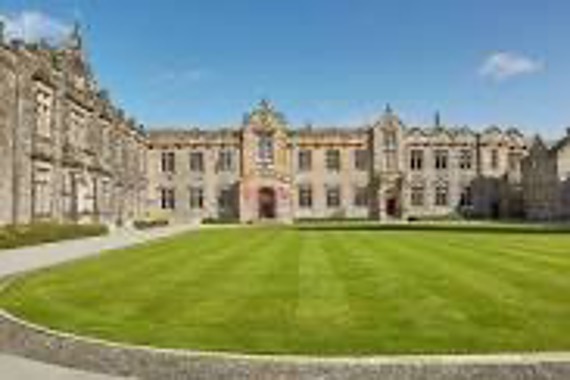
COVID is still with very much with us, but conferences are no longer limited to ZOOM!
I spent several days lecturing and interacting with an amazing group of people at the annual Diverse Intelligences Summer Institute in July, held at St. Andrews University, pictured above. The Institute brings together approximately sixty Fellows (an eclectic group of early career scholars plus media folks who are called Storytellers) and a revolving group of Faculty for three weeks each summer. Fellows attend lectures, then interact with faculty and one another to initiate projects inspired by the Institute that are presented to the entire group at the end of the conference.
I also spent a weekend lecturing to avian veterinary students at the University of Utrecht in June, and a few days lecturing to avian veterinarians at their annual meeting in Denver in August about the cognitive abilities of parrots—information that needs to be transferred to their clients about how these intelligent creatures cannot simply be "warehoused" for many hours a day without appropriate mental stimulation. Parrots that lack such stimulation often exhibit numerous behavioral and even physical health problems, which veterinarians are then asked to address.
During the times I have been in Massachusetts, I continued to work with my two Grey parrot subjects, Griffin and Athena. We’ve been performing additional experiments on inference by exclusion, recognition of optical illusions, and contrafreeloading; we’ve also been setting up some experiments on various new topics. My research associates and I have been writing journal articles on the various studies that have been completed. I’m also serving as a guest editor for a special issue of Interaction Studies on animal-computer interfaces, so "vacation" really hasn’t been a word in my lexicon.
IRENE M. PEPPERBERG is an adjunct research professor at Boston University who studies Grey parrots to determine the cognitive and communicative abilities of these birds and compare their abilities with those of great apes, marine mammals, and young children. She is author of The Alex Studies and Alex & Me.
